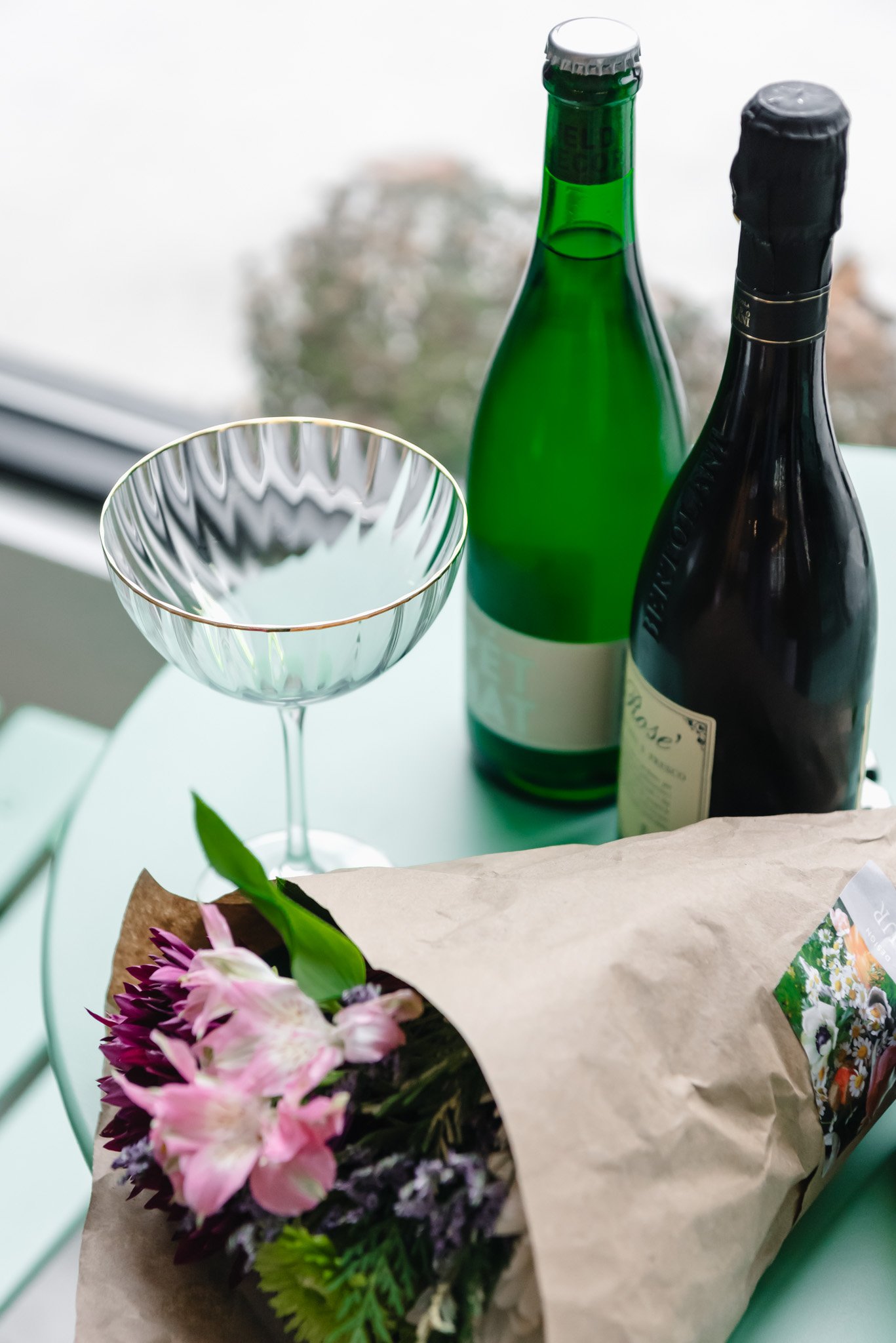Sparkling 101: What’s in a Name?
Champagne, Prosecco, Crémant, Pét-Nat… what’s in a name? As it turns out, quite a lot! From where they come from, to how they get their bubbles, to the grapes used—sparkling wines are a wonderfully diverse world. Since I’ve already confessed my love for all things bubbly, a quick Sparkling 101 feels like the perfect place to start.
We’ve got bubbles to pop and plenty to unpack, so let’s dive in!
The Three Main Methods of Making Sparkling Wine
1. Traditional Method
This is the fancy, time-honored way bubbles are born. It’s used to make Champagne, Crémant, Cava, and other prestigious sparkling wines.
Here’s how it works: a dry still wine is bottled with a bit of yeast and sugar (called dosage). Inside the sealed bottle, the yeast feasts on the sugar, creating a secondary fermentation that produces alcohol—and, most importantly, carbon dioxide, aka the bubbles!
The bottles then rest for at least nine months (Champagne demands even longer: 15 months minimum for nonvintage, three years for vintage). During this time, bottles are “riddled”—or carefully rotated—to gather sediment near the neck for removal, a labor-intensive step that explains the higher price tag of these bottles.
2. Charmat Method
This method is best known for producing Prosecco, and it’s much faster and simpler than the Traditional Method. Instead of fermenting in individual bottles, the secondary fermentation happens in large pressurized tanks.
Because it’s less labor-intensive and quicker, Prosecco and other Charmat-method wines tend to be more affordable and designed to be enjoyed young, fresh, and fruity.
Prosecco itself follows strict rules—it can only be made in nine provinces in northeastern Italy, and must include at least 85% Glera grapes. Most American sparkling wines also use this method.
3. Ancestral Method
Here’s a fun fact: this method is actually the oldest way to make sparkling wine, but it’s having a modern moment thanks to the natural wine movement.
The grape juice ferments like a still wine until some sugar remains, then it’s bottled to finish fermenting—trapping the carbon dioxide inside to create bubbles. These bubbles are often delicate and lively, and the wine tends to be a bit cloudy because it isn’t disgorged (the process of removing sediment).
It’s a one-fermentation process, unlike the two-step methods above. Think of all those trendy bottles with pop-tops or crown caps—they’re often Pét-Nats!
More Than Just Bubbles
While how the bubbles get made is a huge part of what makes these wines unique, it’s just the beginning. There’s also the region, grape varieties, and winemaker choices that shape the character of every bottle.
I’ll be unpacking more about the world of sparkling wine in future posts, but in the meantime? Pop a bottle (or two) and start noticing the differences for yourself.
And here’s a little secret I’ll keep repeating: stop saving your bubbly for special occasions. Sparkling wine is perfect for every day, with anything from casual snacks to fancy dinners… or even just because. Cheers to bubbles and new discoveries!
